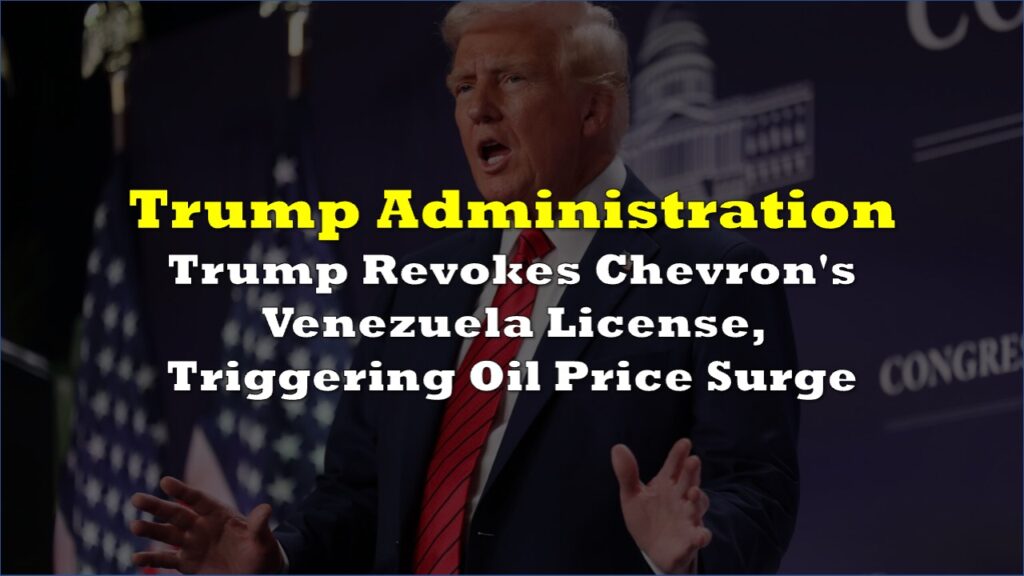In a significant technological advance that could reshape the landscape of global oil production, Chevron (NYSE: CVX) has successfully initiated oil extraction from a field with pressures that reach 20,000 pounds per square inch — a level never before managed in the industry.
This breakthrough is expected to unlock access to up to 5 billion barrels of crude oil that have long been considered inaccessible due to the extreme conditions in such reservoirs. Analysts suggest that this development could be a major driver of future oil production, particularly in the Gulf of Mexico, where Chevron’s pioneering efforts are centered.
The oil field in question is part of Chevron’s Anchor project, located in the deep waters of the Gulf of Mexico. Chevron began pumping oil from the first well of this $5.7 billion project on Sunday, and the second well is nearing completion, according to Bruce Niemeyer, Chevron’s head of Americas oil exploration and production. The pressure at this field exceeds by a third the pressures encountered in any prior oil well, making this a landmark achievement in oil extraction.
To handle such extraordinary pressures, Chevron has employed cutting-edge equipment specifically designed for these conditions, developed by companies such as NOV and Dril-Quip. Additionally, the drillships used, supplied by Transocean, are tailored to withstand the extreme operational demands.
“This new technology represents a critical advancement for the industry,” said Mfon Usoro, a principal analyst at Wood Mackenzie who specializes in Gulf of Mexico operations. “The industry has done their bit to safely deliver the barrels, with the new technology.”
Chevron’s breakthrough comes with the memory of the 2010 Deepwater Horizon disaster still fresh in the minds of many. That catastrophic blowout at the Macondo prospect, operated by Transocean and owned by BP, resulted in the deaths of 11 workers and caused one of the worst environmental disasters in U.S. history. The spill devastated marine life, fouled vast stretches of coastline, and led to intense scrutiny of deepwater drilling practices.
The Macondo disaster was a wake-up call for the oil industry, prompting significant changes in safety protocols and technology. Today, companies like Chevron, BP, and others are applying those hard-earned lessons to ensure that the new generation of high-pressure oil extraction is conducted with safety as a paramount concern.
“The industry has made enormous strides in safety and technology since the Deepwater Horizon incident,” said Usoro. “These ultra-high pressure fields are going to be a big driver for production growth in the Gulf of Mexico, but they also come with a responsibility to ensure that safety standards are maintained at the highest level.”
While Chevron’s Anchor project is the first to successfully tap into such high-pressure reserves, it is unlikely to be the last. Analysts believe that the technology used here could have far-reaching implications beyond the Gulf of Mexico. Similar ultra-high pressure, high-temperature fields exist off the coasts of Brazil, Angola, and Nigeria, where the new 20k technology could unlock vast new reserves.
“Brazil’s offshore developments are prime candidates for future 20k technology application due to their complex high pressure, high temperature environments,” said Aditya Ravi, an analyst with Rystad Energy. Ravi’s analysis suggests that beyond the United States, more than 5 billion barrels of known oil and gas resources globally could benefit from this technological advancement. This represents an amount equivalent to approximately 50 days of current global oil production.
BP, another major player in the global oil industry, is also developing its own high-pressure technology, with an eye on tapping into an estimated 10 billion barrels of oil in the Gulf of Mexico. BP’s first 20k project, Kaskida, was discovered in 2006 but was shelved due to the lack of suitable technology at the time. Now, with the advancements spearheaded by Chevron, BP is poised to revisit these reserves.
The Gulf of Mexico, once a powerhouse of U.S. oil production, has seen its output decline from its 2019 peak of 2 million barrels per day. Chevron’s success with the Anchor project, along with similar projects by Beacon Offshore Energy and BP, could reverse this trend and restore the Gulf to its former prominence as a critical source of U.S. oil.
Information for this story was found via Reuters and the sources and companies mentioned. The author has no securities or affiliations related to the organizations discussed. Not a recommendation to buy or sell. Always do additional research and consult a professional before purchasing a security. The author holds no licenses.









